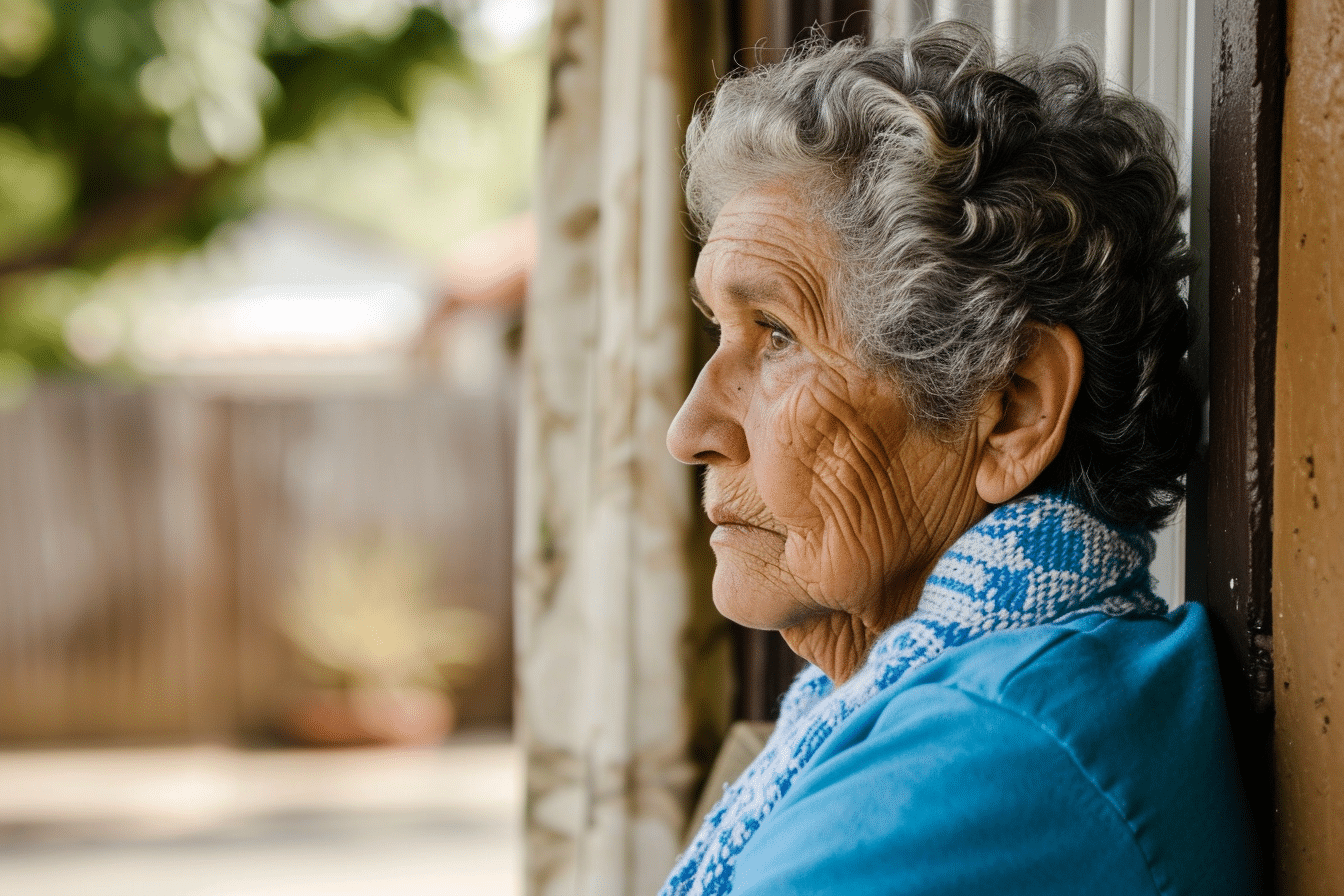
Aging in Place: Simple Tips for a Comfortable Home Transition
Aging in place has become a popular concept in recent years, as more and more seniors express their desire to remain in their own homes as they age. This preference is driven by various factors, including emotional attachments to their homes, maintaining a sense of independence, and being able to remain in familiar communities where they have access to essential services, friends, and family.
One of the challenges of aging in place is anticipating and addressing the changes in an individual’s physical abilities, financial resources, and other requirements that come with age. Proper planning and making necessary home modifications, ensuring access to healthcare and wellness services, and maintaining social connections with friends and family members can go a long way in ensuring an older adult can comfortably age in their chosen environment.
Key Takeaways
- Aging in place involves seniors remaining in their own homes as they age
- Proper planning and home modifications are essential for safe and comfortable aging
- Access to healthcare, social connections, and financial resources are important aspects of aging in place
Understanding Aging in Place
Defining the Concept
Aging in place refers to the ability of older adults to comfortably continue living in their own homes as they age. This concept allows seniors to maintain their independence and familiar environment, while also benefiting from any necessary adjustments or modifications to their homes. The website Aging In Place provides helpful resources and information on this lifestyle option for seniors, family members, and caregivers.
Benefits of Staying Home
There are numerous benefits for older adults who decide to age in place, some of which include the following:
- Emotional comfort: Seniors can maintain a sense of familiarity and emotional attachment in their own homes.
- Cost-effectiveness: It might be more affordable than moving to a new place like a retirement community or assisted living facility.
- Social connections: Aging in place allows seniors to maintain established relationships with their neighbors, friends, and community.
Statistics and Trends
Aging in place has become increasingly popular among older adults in recent years. Some key statistics and trends related to this concept are:
- According to a 2018 AARP survey, around 76% of Americans aged 50 and older prefer to remain in their homes as they age.
- In recent years, there has been a growing demand for home modifications and services tailored to support older adults living in their own homes.
In light of these trends, it is evident that aging in place is an important consideration for older adults, their families, and caregivers.
Planning for Aging in Place
Initial Considerations
When planning for aging in place, it’s essential to evaluate the current living situation and identify potential challenges. Consider accessibility, safety, and comfort. Ask questions like:
- Can the residence accommodate mobility aids such as walkers, wheelchairs, or scooters?
- Are the bathrooms equipped with grab bars and non-slip flooring?
- Is the kitchen layout practical for aging in place?
Make adjustments as needed, and always consider future needs as well.
Long-Term Strategies
Implementing long-term strategies can help ensure a comfortable and supported aging in place experience. A few essential ideas include:
- Home Modifications: Make changes to the living space that support aging in place, such as widening doorways, installing ramps, or adding a stairlift.
- Technology: Use devices like smart home gadgets, medical alert systems, and communication tools to enhance safety, independence, and social connectedness.
- Support Network: Develop a strong support network of family, friends, neighbors, and local services that can provide assistance and companionship.
Legal and Financial Planning
Addressing legal and financial planning is crucial for a successful aging in place experience. Consider the following aspects:
- Budgeting: Create a financial plan that includes anticipated expenses related to home modifications, healthcare, and daily living costs.
- Retirement Funds: Assess retirement savings and investments to ensure they can accommodate long-term needs.
- Insurance: Review health, homeowners’, and long-term care insurance policies to verify adequate coverage.
- Legal Planning: Establish essential legal documents, such as a will, living will, power of attorney, and healthcare proxy.
By taking these factors into account, individuals can make informed decisions and prepare for a comfortable, secure, and fulfilling aging in place experience.
Home Safety and Adaptation
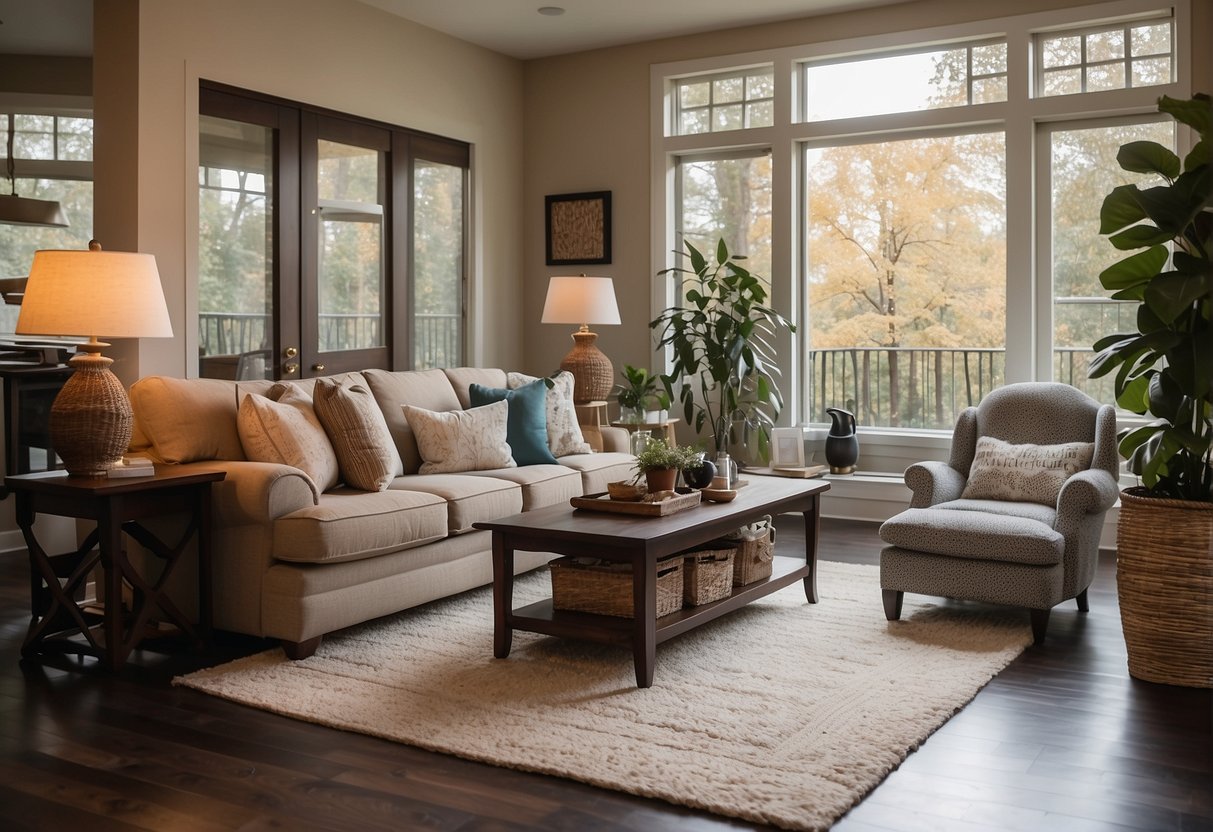
Home Modifications
As people choose to age in place, home modifications become essential for maintaining home safety. Some key alterations include installing grab bars near the toilet and bathtub, adding a shower chair, and improving lighting throughout the home. Other changes, such as widened doorways and accessible storage, can make daily tasks simpler. Aging in Place in 2023: What It Is and What You Can Do offers more ideas on how to implement these modifications for a safer living environment.
Adaptive Technologies
Incorporating adaptive technologies can greatly enhance home safety and independence. Examples of these technologies include:
- Voice-activated devices for controlling lights and appliances
- Automatic medication dispensers with reminders
- Door sensors and video doorbells for added security
These tools can improve the ease and comfort of living at home while providing peace of mind for both seniors and their families.
Fall Prevention Strategies
Fall prevention is a critical aspect of home safety for those aging in place. Some effective strategies include:
- Removing obstacles and clutter from walkways
- Ensuring proper lighting in all areas of the home, especially staircases
- Placing nonslip mats in the bathroom, particularly near the shower and bathtub
- Installing handrails along stairs and in hallways
By implementing these adjustments, the home environment can be made safer and more conducive to aging in place.
Healthcare and Wellness
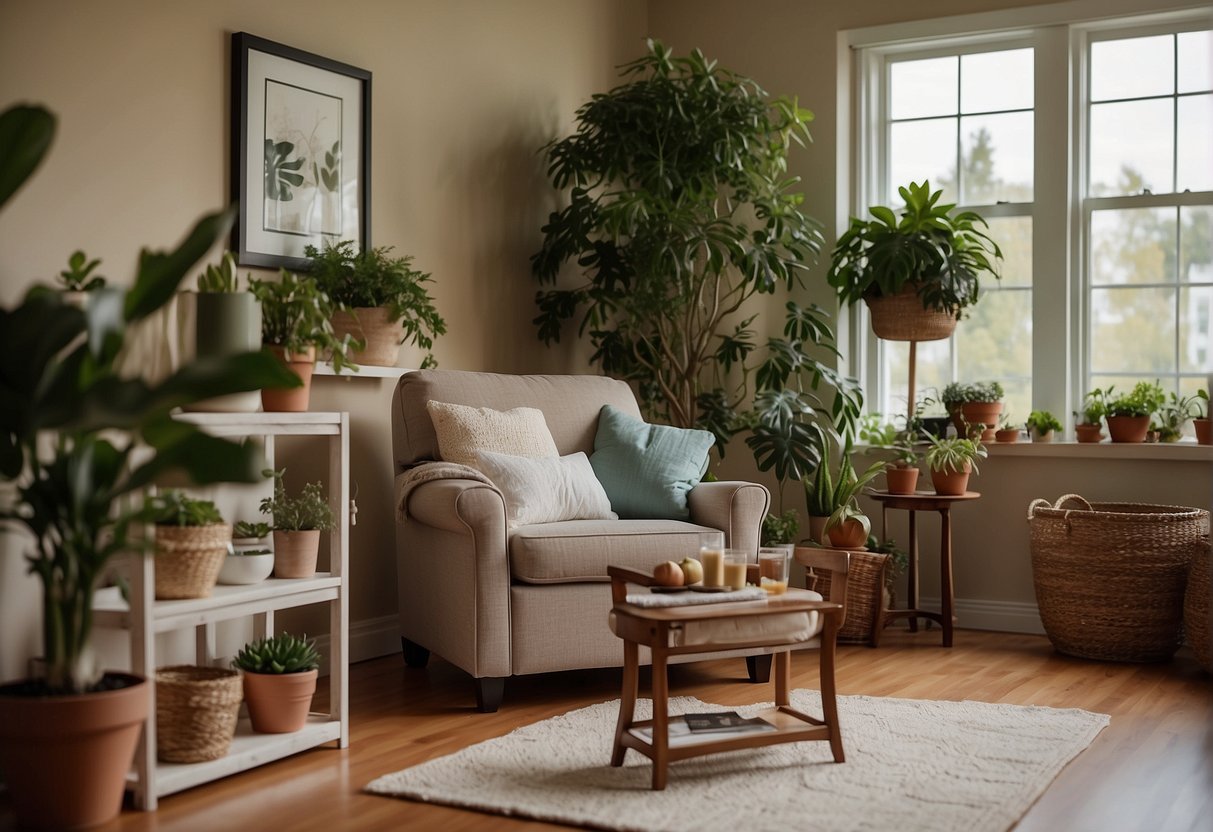
Managing Chronic Conditions
Aging in place often includes managing chronic conditions, such as diabetes, heart disease, or arthritis. Effective healthcare is essential to ensure older adults maintain their independence and overall well-being. Aging in Place: Growing Older at Home offers information on resources and support services available to help seniors manage their conditions.
It’s important to:
- Keep track of medications, dosages, and schedules
- Attend regular doctor appointments
- Use assistive devices, if needed
Mental Health Considerations
Mental health plays a key role in the wellness of older adults. As individuals age in place, it’s essential to prioritize social connections, engage in regular cognitive activities, and reach out to professionals when needed.
Some suggestions for addressing mental health include:
- Joining a social group or participating in community events
- Engaging in regular cognitive activities, such as puzzles or reading
- Seeking support from a mental health professional, if needed
Remember, mental health plays an integral part in overall wellness and should not be overlooked in the aging-in-place journey.
Physical Health Maintenance
Maintaining physical health is crucial for successful aging in place. Staying active, ensuring proper nutrition, and accessing healthcare regularly can help seniors maintain their independence and enjoy their homes for years to come.
Steps to maintain physical health:
- Stay active with regular exercise, such as walking or swimming
- Ensure proper nutrition, incorporating a range of healthy foods into daily meals
- Utilize services, such as Medicare, to access necessary healthcare services
In summary, focusing on healthcare and wellness enables older adults to age in place successfully, maintaining their independence and enjoying a high quality of life.
Mobility and Transportation
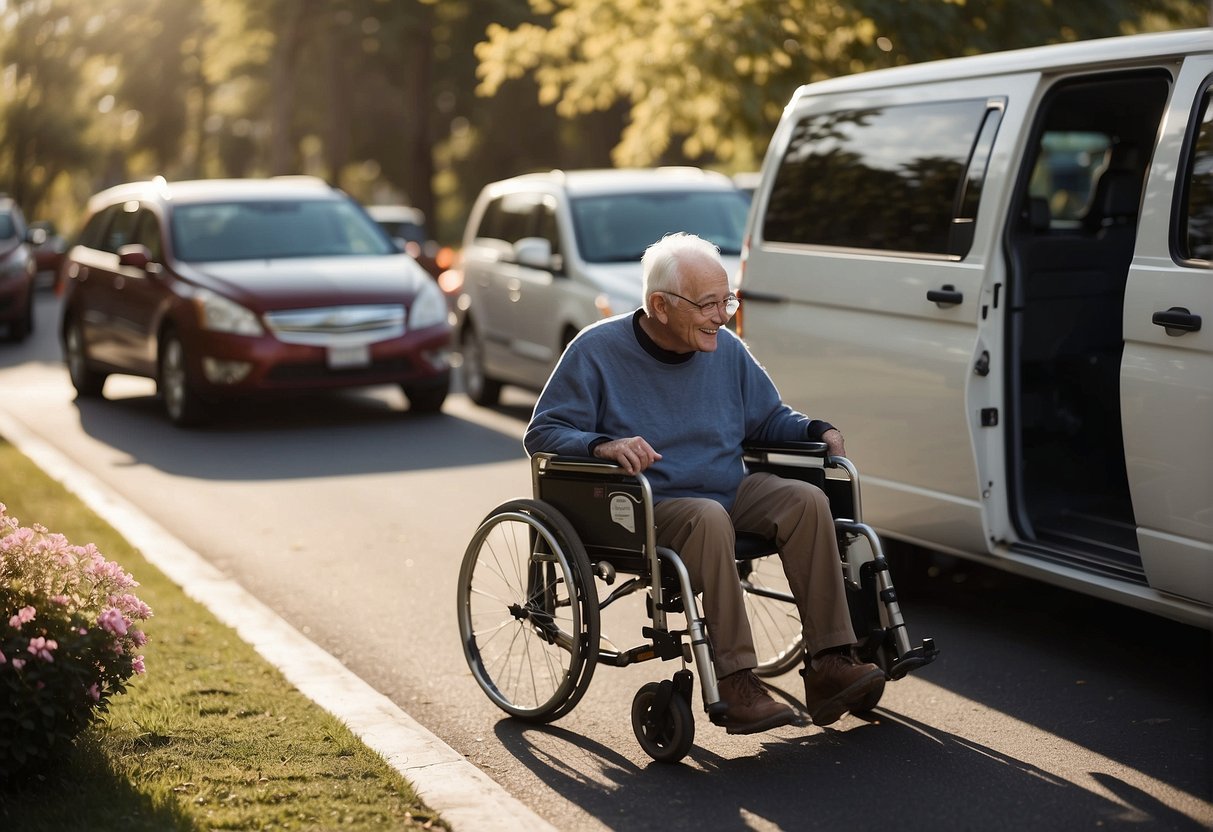
Staying Mobile
Maintaining mobility is crucial for aging in place. To stay mobile, older adults should prioritize regular exercise, as it helps maintain flexibility, strength, and balance. Low-impact activities, such as walking, swimming, yoga, and tai chi, can be beneficial for those in their later years.
Assistive devices also play a significant role in maintaining mobility. Items like walkers, canes, and wheelchairs offer support and assistance for daily movements. It is crucial to consult with a healthcare professional to determine the most suitable device for individual needs.
Transportation Options
For aging individuals, getting around is about more than just convenience; it’s also about staying connected to the community. Here are some popular transportation options for seniors:
- Public transportation: Buses, trains, and subways are cost-effective and familiar ways to travel. Many cities offer discounted fares for seniors.
- Ride-sharing: Uber, Lyft, and similar services can provide door-to-door transportation at a variety of price points.
- Community programs: Some local organizations offer volunteer-based services like non-emergency medical transportation (NEMT) and regular shopping or social outing trips.
Safe Driving Tips
As we age, it is essential to reassess our driving skills and make adjustments to ensure safe driving practices. Here are some useful tips for senior drivers:
- Regular eye exams: Good vision plays a vital role in road safety. Schedule annual eye exams, and update your prescription glasses or contact lenses as necessary.
- Be aware of medications: Some medications can affect reaction times and drowsiness levels. Always discuss potential side effects with your healthcare provider.
- Adjust your vehicle: Make sure your car accommodates your physical needs, such as seat and mirror adjustments, to ensure maximum comfort and safety on the road.
Remember, aging in place is made more manageable when mobility and transportation needs are addressed. Stay active, explore various transportation options, and practice safe driving habits to maintain independence and an optimal quality of life.
Social Engagement and Support

Maintaining Social Networks
One of the key aspects of aging in place is maintaining an active social network. This can contribute significantly to seniors’ overall well-being, as they can stay connected with friends, family members, and neighbors: making their lives more enjoyable and meaningful. Activities like joining clubs, participating in group activities, and using technology to stay in touch can greatly help maintain these networks.
A few ideas for maintaining social networks:
- Use social media
- Attend events at the senior center
- Schedule regular meetups with friends
- Participate in group classes or activities
Community Involvement
Being an active part of the community is another way for seniors to stay engaged while aging in place. This not only helps them maintain social connections but also gives them a sense of purpose and satisfaction in contributing to the community. Volunteering, participating in local events, and joining community organizations can all be great ways to stay involved.
A few community involvement opportunities:
- Volunteering at a senior center
- Joining local clubs or organizations
- Attending community events
- Providing support for local initiatives
Accessing Support Services
Aging in place may require some support from external services, and these services should be easily accessible for seniors. For instance, caregivers can provide assistance with daily tasks like preparing meals and medication management. Seniors should also have access to transportation services and home maintenance resources to ensure their safety and mobility.
To access support services, seniors may consider the following options:
| Support Service | Resources |
|---|---|
| Caregivers | Home care agencies, referral services |
| Transportation | Senior transportation services, rideshare apps |
| Home Maintenance | Local repair services, neighborhood help |
By staying socially engaged, staying involved in the community, and accessing support services, seniors can maintain their independence, happiness, and connections while aging in place.
Daily Living Assistance

Assistance with ADLs
Aging in place often involves support with Activities of Daily Living (ADLs), such as cooking, bathing, and cleaning. A variety of services and devices can help make these tasks simpler and safer. For instance, meal delivery services take the stress out of cooking, while easy-to-use cleaning tools make tidying up less of a chore. Adaptations like grab bars and non-slip mats in the bathroom can enhance safety during bathing. Overall, assistance with ADLs aims to make daily life more manageable for seniors living independently.
Caregiver Support
Caregivers are crucial in providing the necessary help and companionship for older adults who choose to age in place. They come in various forms, including:
Family and friends: Loved ones can often step in to help with tasks like cooking, cleaning, and personal care.
In-home care professionals: Skilled workers can provide assistance with medical and non-medical tasks, depending on the unique needs of each senior.
Community resources: Local programs and support groups can offer additional practical and emotional assistance.
Collaboration between caregivers and older adults is essential in creating a comfortable and safe living environment.
Using Technology to Aid Independence
Thanks to modern technology, there are now various tools and devices designed to improve the lives of seniors aging in place. Here are a few popular options:
| Device | Function |
|---|---|
| Smart speakers | Enable voice-activated control of various household devices. |
| Mobility aids | Assist in moving around safely and independently. |
| Medication reminders | Provide alerts to ensure medications are taken on time. |
| Video calling | Facilitate communication with loved ones and healthcare professionals. |
Embracing these technologies can contribute to seniors maintaining their independence and staying engaged with their friends, family, and community.
Financial Considerations and Resources

When aging in place, financial stability is key. To ensure a comfortable and secure lifestyle, let’s examine strategies for budgeting expenses, tax advantages, and funding sources.
Budgeting and Expense Planning
To ensure a comfortable lifestyle, it’s important to have a solid plan in place. Start by listing monthly income streams, like Social Security, pensions, and investments. Then, determine expenses such as:
- Housing
- Utilities
- Insurance (health, home, car, etc.)
- Groceries
- Entertainment
Compare income to expenses, and make adjustments where necessary. Don’t forget, Medicare may cover certain costs, so be sure to research what’s available.
Tax Advantages and Credits
Tax breaks can make a significant difference in financial stability. Here are a few worth considering:
- Property Tax Exemptions: Some states and localities offer exemptions for older adults on their tax bill.
- Medical Expense Deductions: If medical costs exceed a specific threshold, deductions become available.
- Tax Credits for Energy Efficiency: Upgrading to energy-efficient appliances or systems can result in tax savings.
Consulting a tax professional is recommended to help navigate these options.
Exploring Funding Sources
Need additional assistance? Check out these resources:
- Reverse Mortgage: This allows homeowners to convert part of their home’s equity into cash, in return for the loan being paid off when the house is sold or the homeowner dies.
- Home Equity Line of Credit (HELOC): Similar to a reverse mortgage, this option allows homeowners to borrow against their home’s equity, but must be repaid with interest.
- Government Programs: Various government initiatives can provide assistance for home modifications, energy efficiency, and more.
Researching and evaluating these funding sources can help secure a more sustainable lifestyle while aging in place.
Aging In Place in Oklahoma
Aging in place has become a significant focus for many communities, and Oklahoma is no exception. With a substantial portion of its population entering their senior years, the state has been developing strategies to support older adults in their desire to remain in their homes and communities as they age.
Aging in Place in Oklahoma: Embracing Community and Independence
For many seniors in Oklahoma, the concept of aging in place represents more than just a preference; it’s about maintaining their independence, staying connected with their community, and preserving a sense of familiarity and comfort. According to Oklahoma’s Multisector Plan on Aging, there are approximately 875,877 adults aged 60 and older in the state, with around 140,000 aged 80 or older. This demographic shift underscores the importance of creating a supportive environment for seniors.
In response to the growing need for aging in place resources, Oklahoma has been proactive in coordinating services that benefit older Oklahomans. The state’s approach includes a comprehensive array of services that address the diverse needs of seniors, focusing on health care, transportation, housing modifications, and social engagement. These services are crucial for seniors who wish to age in place, as they provide the necessary support to live safely and independently at home.
Resources and Support for Oklahoma Seniors
Oklahoma’s dedication to its senior population is evident through the resources and support systems it has established. The state has recognized that by providing seniors with the necessary resources to remain home, it not only enhances their quality of life but also results in cost savings for the state. These resources include home health services, home modification programs, and access to senior nutrition programs, which are all vital for seniors who choose to age in place.
Moreover, the state faces challenges such as a shortage of health care workers, which impacts the ability to provide in-home care—a critical component of aging in place. Addressing this shortage is part of Oklahoma’s broader strategy to ensure that seniors can continue to live independently with the care and support they need.
Community Involvement and Aging in Place
Community involvement is another key aspect of aging in place. Oklahoma encourages the involvement of local communities in supporting their senior members. This includes creating age-friendly communities that are walkable, have accessible transportation options, and provide opportunities for social interaction. By fostering an environment where seniors feel valued and connected, Oklahoma enhances the aging in place experience.
Conclusion
Aging in place in Oklahoma is about building a framework that supports the autonomy and well-being of seniors. With a growing senior population, the state is actively working to address the needs of older adults, ensuring they have the resources and community support to lead fulfilling lives in the comfort of their own homes. As Oklahoma continues to adapt and improve its services for seniors, it sets an example for how to care for an aging population with dignity and respect.
Preparing for the Unexpected
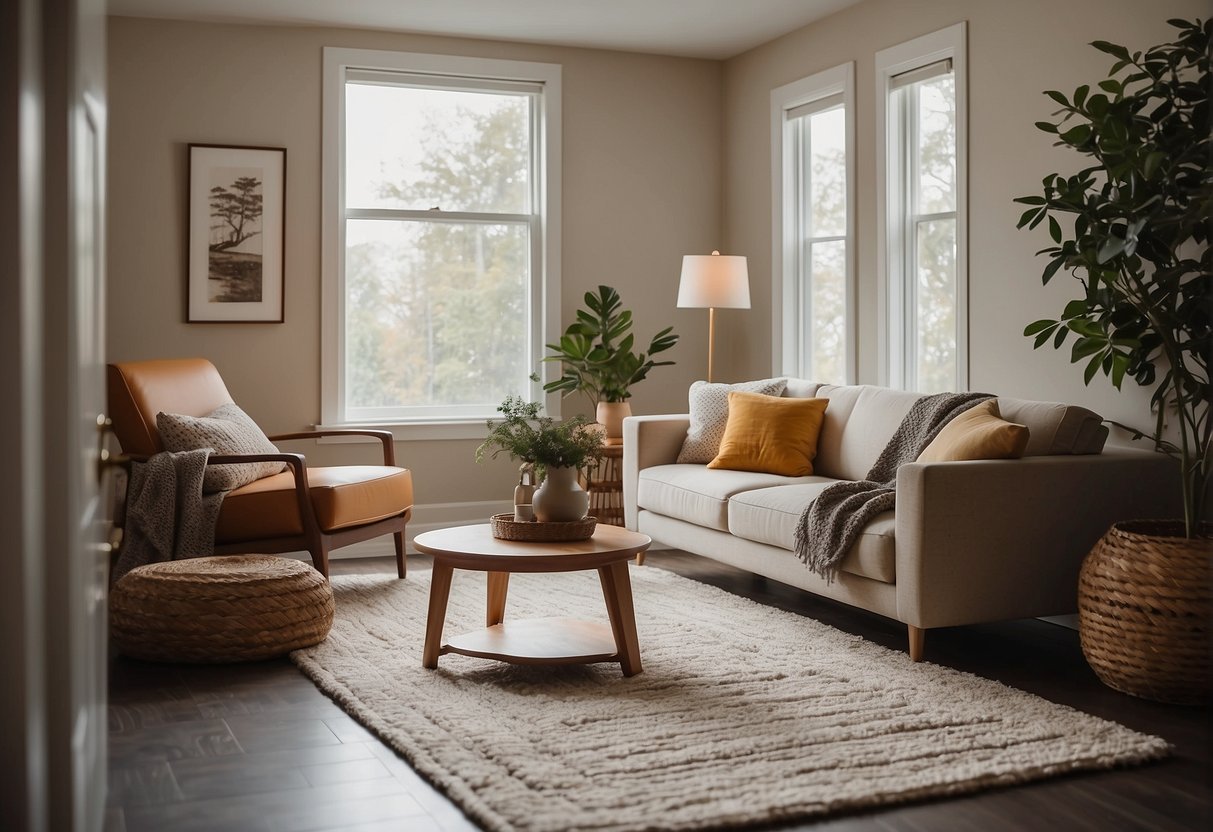
Emergency Preparedness
One of the most essential aspects of aging in place is being ready for the unexpected. Emergency preparedness should be a priority when creating a plan for a safe and comfortable home environment. Consider having an emergency kit with enough supplies, such as non-perishable food, water, medications, and first aid items, to last at least 72 hours. Additionally, make sure there are functional smoke detectors and carbon monoxide monitors in the residence.
It’s also wise to establish a communication plan with family, friends, and neighbors that outlines who to contact in case of an emergency. This includes designating a “buddy” who regularly checks up on the senior and providing the “buddy” and healthcare professionals with a list of emergency contacts and pertinent medical information.
Healthcare Crises Management
Proactively preparing for potential healthcare crises is crucial. This involves maintaining ongoing communication with healthcare professionals and staying up to date with any recommended preventive measures. Regular check-ups and early detection screenings can help identify potential health issues before they escalate.
In case of a healthcare crisis, it’s essential to know who to contact, whether it’s a primary care doctor, specialist, or an emergency hotline. If possible, have a transportation plan in place to reach medical facilities quickly.
Advance Care Directive
An Advance Care Directive is a legal document that outlines a person’s healthcare preferences and designates a healthcare proxy to make decisions on their behalf if they become incapacitated. This document provides a clear and concise guide for healthcare professionals to follow in the event of a crisis.
Creating an Advance Care Directive can provide peace of mind for individuals and their loved ones, knowing that they have outlined their healthcare preferences and chosen a trusted person to act on their behalf when necessary.
To sum up, when planning for aging in place, it’s necessary to prepare for the unexpected by focusing on emergency preparedness, healthcare crisis management, and creating an Advance Care Directive. Employing a proactive approach to safety and communication can ensure a more comfortable and secure living situation for seniors.
Final Thoughts
Aging in place offers numerous benefits for older adults, including independence and comfort in familiar surroundings. However, it’s essential to ensure that their homes have suitable modifications, enabling them to live safely and comfortably.
To achieve successful aging in place:
Home modifications: Install grab bars, widen doorways, and make other necessary adjustments to make the home more accessible.
Home upkeep: Regularly clean and maintain the home to reduce hazards and provide a healthy living environment.
Community support: Access to transportation, healthcare, and social activities promotes overall well-being.
With the right planning and support, older adults can enjoy a fulfilling and independent life at home.
Luxury Specialist at McGraw Realtors
With a diverse background, including a career as an Air Force fighter pilot and entrepreneurship, Bill transitioned to real estate in 1995. Co-founding Paradigm Realty with his wife, Charlene, he quickly rose to prominence in Oklahoma City’s luxury real estate scene. Now, as one of the top agents with annual sales surpassing $20 million, Bill’s dedication to exceptional service remains unparalleled. With a legacy spanning over two decades in the industry, Bill’s expertise and commitment make him a trusted name in luxury real estate.